The Truth That No One Talks About!
How strong will my deck be? That’s the real question. And let’s be honest—not every deck is built to last.
Some start off looking solid but sag under weight, crack from constant use, or weaken after just a few seasons. If you’re investing in a deck for a large-scale project, a commercial space, or high-traffic outdoor areas, strength isn’t just a bonus—it’s the deciding factor between long-term reliability and costly repairs.
So, what actually determines deck strength? Is it just the type of wood? Or is there more to the equation than most people realize?
The answer might surprise you. Let’s break it all down.
What Does “Strength” Actually Mean for Large-Scale Decking Projects?
How strong will my deck be? It’s a question that goes beyond appearances. A deck might look solid on day one, but will it still hold up after years of foot traffic, shifting weather conditions, and constant weight? Strength isn’t just about how a deck feels at installation—it’s about how well it performs over time without warping, cracking, or requiring costly repairs.

For large-scale projects, commercial spaces, and high-traffic environments, decking isn’t just an aesthetic choice—it’s a long-term investment. And the last thing anyone wants is a deck that starts failing too soon, forcing expensive replacements or constant maintenance. So, how strong will my deck be if I choose the right material? The answer isn’t just about the type of wood—it’s about long-term structural performance.
Strength Is More Than Just Wood Type
Most people assume that choosing a hardwood over a softwood automatically means a stronger deck, but strength is about much more than just wood classification. A truly strong deck resists wear, handles heavy loads, and maintains its integrity under environmental stress—not just when it’s first installed, but for years to come.
One key measure of wood strength is the Janka Hardness Scale, which tests resistance to wear and denting. Acacia ranks between 1,700-2,200 lbf, making it significantly stronger than Cedar (350-900 lbf) and even some species of Teak (1,000-1,200 lbf). That means an Acacia deck is far less likely to dent under heavy furniture, high foot traffic, or commercial use.
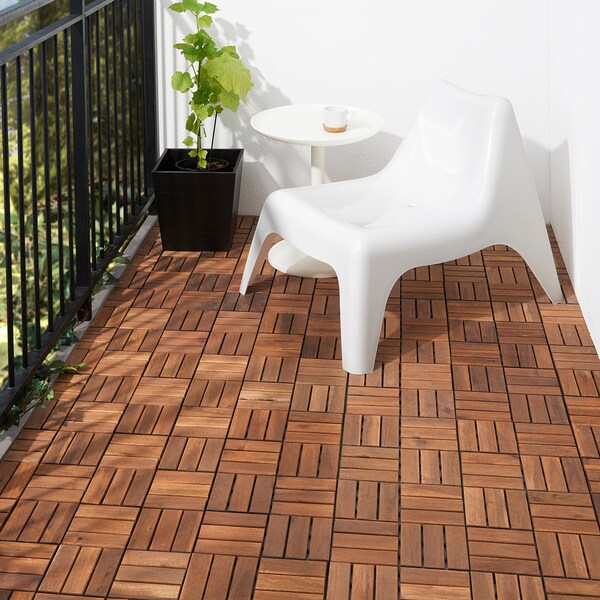
But wood hardness alone doesn’t determine how strong my deck will be. Strength also depends on how well the material resists moisture, expansion, and long-term stress. Many woods with high hardness ratings, like Oak, are still prone to warping and splitting when exposed to fluctuating humidity. Acacia, on the other hand, has a naturally tight grain structure, reducing the risk of swelling, cracking, or moisture damage.
For high-traffic decks, one of the biggest failure points isn’t just wear and tear—it’s structural instability caused by moisture absorption. Softwoods like Pine soak up water easily, causing swelling, rot, and eventual structural failure. In contrast, Acacia’s natural resistance to moisture makes it an ideal choice for commercial decking, where durability isn’t optional—it’s essential.

A deck that weakens under pressure isn’t a strong deck at all. The real test isn’t how a deck looks on installation day—it’s how well it holds up years later, after being exposed to sun, rain, and daily use.
So, how strong will my deck be? The answer depends on whether the material is built to handle real-world stress, minimize long-term costs, and deliver the reliability that large-scale projects demand.
Load-Bearing Capacity
A deck isn’t just meant to be seen—it’s meant to be used. Whether it’s a rooftop lounge supporting hundreds of guests, an outdoor dining area loaded with furniture, or a boardwalk handling constant foot traffic, a deck that lacks structural strength is a failure waiting to happen.
How strong will my deck be? That depends on how well it carries weight, distributes stress, and resists compression damage over time. A deck that bends, sags, or weakens under pressure isn’t just an inconvenience—it’s a structural liability that leads to safety risks, costly repairs, and long-term financial loss.

A study by the Forest Products Laboratory (FPL) in the U.S. found that wood’s load-bearing performance isn’t just determined by its density or hardness—it’s about how its fibers handle distributed weight over time. Hardwoods tend to compress less than softwoods, but not all hardwoods react the same way under constant mechanical stress.
One of the key indicators of how strong my deck will be under heavy loads is its Modulus of Rupture (MOR)—a measure of how much stress a material can take before it breaks. Acacia has an MOR of approximately 17,000 psi (pounds per square inch), making it significantly stronger than Cedar (~7,500 psi) and even some Teak (~14,000 psi). This means that under the same amount of weight, Acacia is less likely to crack, deform, or fail compared to softer, less dense woods.
But strength isn’t just about static weight—it’s about how a deck holds up under repeated movement, shifting pressure, and sudden impact. Research from the Wood Handbook by the U.S. Department of Agriculture (USDA) highlights that materials with higher fiber stress resistance—like Acacia—can absorb continuous impact from foot traffic without developing weak points. This is why decks in high-use areas, such as hotel patios, commercial boardwalks, or public event spaces, require materials that can handle movement without structural degradation.
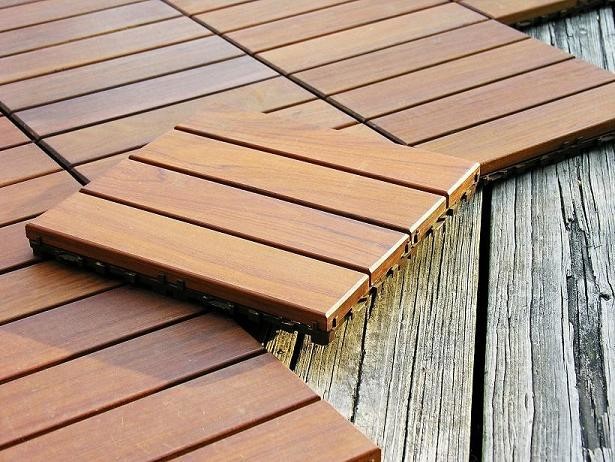
Another critical factor affecting load-bearing performance is fastener retention. When a deck expands and contracts too much, screws loosen, boards shift, and the entire structure loses stability. This is a common issue in softwoods and even some hardwoods with open grain patterns. Acacia’s interlocking grain structure holds fasteners securely, reducing the risk of loosened boards and ensuring that the deck remains firm and intact even after years of use.
Moisture content also plays a role in a deck’s ability to carry weight. Wood that absorbs too much water softens over time, reducing its ability to distribute pressure evenly. According to studies by the Wood Research and Development Center, materials with lower moisture absorption rates maintain better structural integrity in high-load environments. Acacia naturally resists moisture, which means it retains its strength even in humid conditions—an essential factor for outdoor decks exposed to the elements.
How strong will my deck be under commercial use, constant movement, and environmental stress? That depends on whether the material is built to distribute weight effectively, absorb stress without permanent deformation, and maintain its shape under load. A deck that can’t handle high pressure isn’t just weak—it’s a long-term liability that leads to costly maintenance and early replacement.

If you’re wondering not just about strength, but also longevity, check out our guide on what really determines deck durability to see how different materials and conditions impact your deck over time.
Material Resilience
A deck isn’t just exposed to weather and weight—it’s constantly under attack from moisture, insects, and surface wear. These factors silently break down weaker materials, causing swelling, rotting, splintering, and structural instability. How strong will my deck be if it can’t resist these long-term threats? The answer is simple: it won’t be strong at all.
How strong will my deck be against moisture? Water is the silent killer of decking materials. When wood absorbs moisture unevenly, it swells, warps, and weakens from the inside out. Some woods, like Pine or Oak, act like sponges—pulling in water, expanding when wet, and contracting when dry. This constant cycle leads to internal stress fractures that eventually split the boards.
Acacia is different. Its tight, interlocking grain structure prevents deep water penetration, reducing the risk of warping and structural failure. Unlike softwoods that require heavy chemical treatments to stay stable, Acacia naturally repels excess moisture, making it a reliable choice for humid environments, poolside decks, and areas with unpredictable weather patterns.
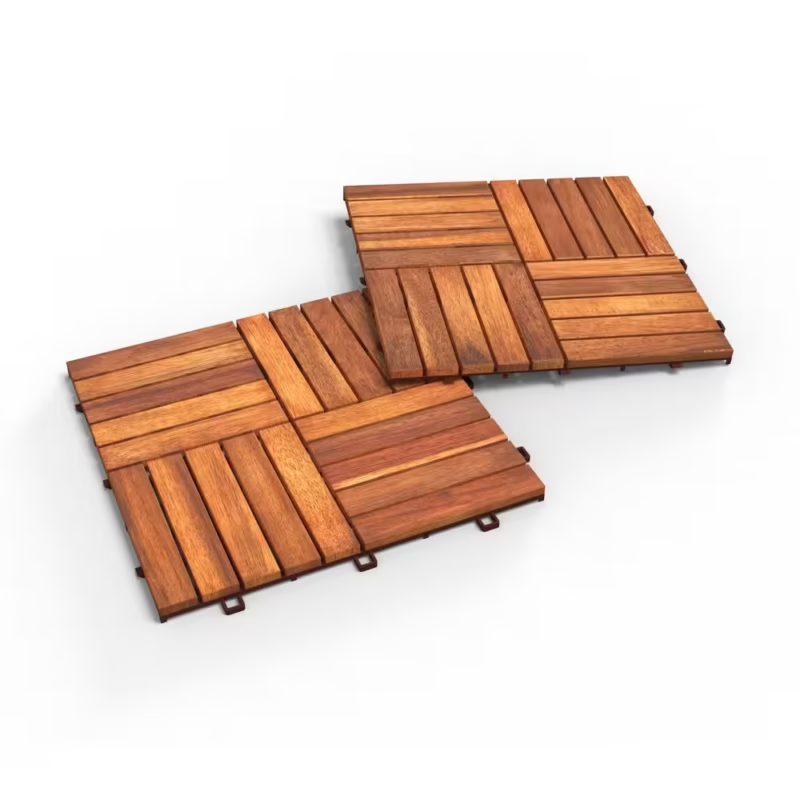
How strong will my deck be against mold and fungal decay? Moisture exposure doesn’t just lead to warping—it creates the perfect breeding ground for mold, mildew, and wood-decaying fungi. Many softwoods and even some hardwoods require annual sealing and treatment to prevent fungal growth. Acacia, on the other hand, contains natural tannins and oils that make it highly resistant to fungal decay, keeping the deck structurally sound without excessive maintenance.
How strong will my deck be against insect infestations? Termites, carpenter ants, and wood-boring beetles are notorious for hollowing out wooden structures from the inside, weakening the deck’s load-bearing capacity. Some decking materials require chemical preservatives to deter insects, but Acacia’s high-density fibers and natural oils create an inhospitable environment for pests. Unlike porous softwoods, which allow insects to burrow easily, Acacia’s tight grain makes it significantly more resistant to infestations, ensuring that structural strength remains uncompromised over time.
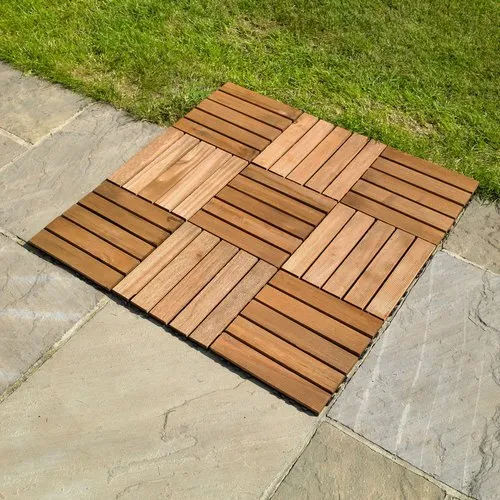
How strong will my deck be after years of foot traffic, dragging furniture, and daily use? Moisture and insects might be the invisible enemies of decking, but physical abrasion is the most immediate form of damage. Over time, softwoods tend to show wear patterns, especially in high-traffic areas, where repeated movement of chairs, tables, and footsteps gradually erodes the wood surface.
Acacia’s unique grain structure not only provides impact resistance but also distributes pressure evenly across the board, reducing localized wear. Unlike materials that develop noticeable grooves or splintering over time, Acacia retains a smoother surface, even after years of exposure to constant movement, weather fluctuations, and physical stress.
A deck that fails against moisture, insects, or wear isn’t truly strong—it’s just temporarily intact. How strong will my deck be if I choose Acacia? It’s not just about durability on day one; it’s about maintaining that strength after years of real-world use. A strong deck doesn’t just survive—it stands the test of time.
The Hidden Weaknesses That Can Ruin Any Decking Investment
A deck isn’t just an outdoor feature—it’s an investment. How strong will my deck be after years of exposure to heavy foot traffic, shifting weather conditions, and the wear and tear of daily use? That depends on whether hidden weaknesses were built into the project from the start. Many decks don’t fail overnight; they weaken gradually due to poor material choices, flawed installation, or overlooked moisture control—issues that might not seem obvious at first but can lead to costly repairs, safety risks, and a shortened lifespan.
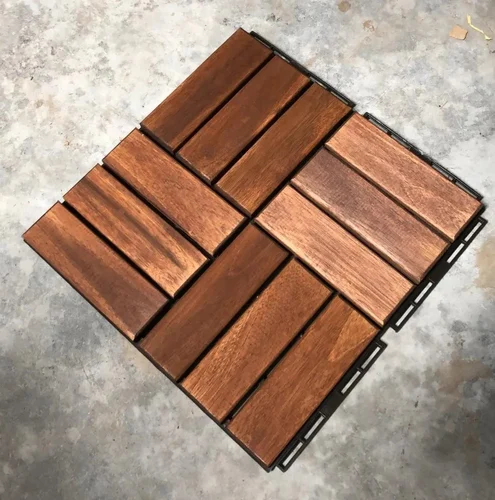
For commercial and large-scale decking projects, these factors become even more important. The wrong wood choice can mean replacing boards far sooner than expected. Poor installation can result in shifting, warping, and an unstable surface. And if moisture control isn’t planned properly, even the strongest wood can rot from the inside out. Avoiding these pitfalls starts with understanding what truly determines deck strength—and what weakens it over time.
Inferior Wood Choices
Strength starts at the core. How strong will my deck be if the wood itself isn’t up to the challenge? The truth is, no matter how well a deck is built, if the material isn’t strong enough to withstand real-world conditions, failure is only a matter of time.
Softwoods, such as Pine and Cedar, are popular for their affordability and ease of installation, but their low density makes them vulnerable to comp ression damage, moisture infiltration, and insect attacks. The Forest Products Laboratory (FPL) at the U.S. Department of Agriculture has documented that softer woods show higher surface deformation under pressure, meaning they dent and warp faster under heavy foot traffic. In commercial applications, this leads to uneven surfaces, weak spots, and increased maintenance demands—a problem that compounds quickly when dealing with large-scale decking installations.

Even among hardwoods, not all are created equal. Lower-grade hardwoods can contain inconsistencies in grain structure, knots, or internal weaknesses that aren’t visible at first but compromise the deck’s integrity over time. Some suppliers blend lower-density hardwoods into shipments to cut costs, making it harder to ensure uniform strength across the entire deck. These inconsistencies create weak points where cracking, warping, and moisture penetration can begin, significantly reducing the lifespan of the deck.
How strong will my deck be if I choose Acacia instead? Unlike softwoods, which require constant sealing to slow down moisture absorption and prevent decay, Acacia’s high-density fibers and interlocking grain provide built-in resistance to compression damage, swelling, and long-term wear. Independent studies on wood durability show that denser hardwoods like Acacia experience significantly lower expansion and contraction rates, meaning they are less likely to develop structural weaknesses over time.
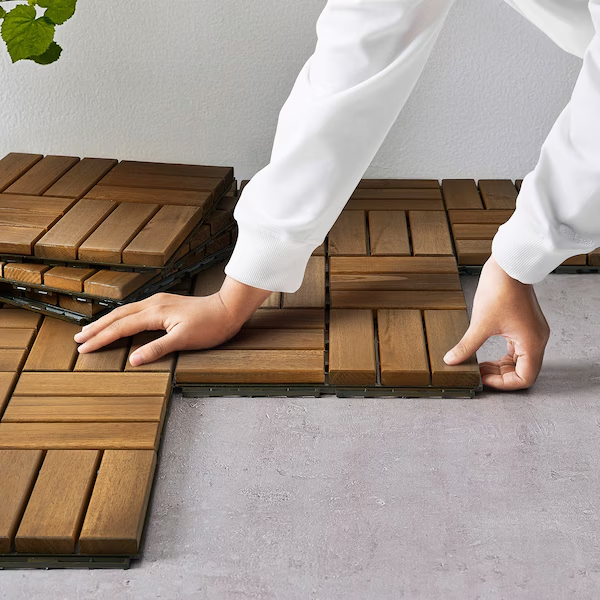
Durability isn’t just about hardness—it’s about whether the material can resist the forces that cause decks to deteriorate. If the wrong wood is chosen from the start, no amount of maintenance will stop it from wearing down faster than expected. How strong will my deck be? That answer is decided the moment the material is chosen, and compromising on wood quality means compromising on long-term strength.
Poor Installation in Large-Scale Projects
A deck isn’t just about what’s on the surface—its real strength comes from what’s underneath. How strong will my deck be if the installation is rushed, sloppy, or built on a weak foundation? The harsh truth? It won’t be strong at all. No matter how durable the wood is, if the installation is flawed, the deck will warp, sag, or fall apart long before it should.
Large-scale projects demand precision, not shortcuts. Yet, one of the most common mistakes in commercial decking is improper substructure planning. When contractors space joists too far apart to save time or materials, the deck may seem stable at first—but over time, boards begin to flex, screws loosen, and the entire structure starts shifting underfoot. For a high-traffic commercial deck, this isn’t just an aesthetic issue—it’s a structural failure waiting to happen.

How strong will my deck be if the substructure isn’t right? A weak foundation creates uneven weight distribution, forcing certain areas to bear more stress than others. This accelerates wear and tear, leading to premature board failure, unstable footing, and an increased risk of long-term damage. Acacia, known for its dense and durable fiber structure, performs at its best when properly supported. But if the foundation is weak, even the strongest wood can’t compensate for bad construction.
Thermal expansion is another silent killer of poorly installed decks. Wood naturally expands and contracts with temperature changes, and if the installation doesn’t account for expansion gaps, boards will press against each other, causing buckling, cracking, or even full-on structural failure. How strong will my deck be if there’s no room for movement? The answer is simple: not strong at all. Expansion gaps aren’t just a technicality—they’re the difference between a deck that lasts and a deck that breaks under pressure.
Even something as small as fastener selection can make or break a deck’s strength. Weak, low-quality screws or nails don’t hold up to the natural movement of wood, leading to loosened boards, shifting planks, and long-term instability. Some installers skip proper anchoring techniques, thinking it won’t make much of a difference—but over time, that’s exactly what causes a deck to creak, wobble, and ultimately fail.
How strong will my deck be if I get the installation right? If the substructure is solid, the expansion is accounted for, and high-quality fasteners are used, Acacia decking can withstand decades of heavy use without warping, shifting, or failing. But even the toughest wood won’t survive bad craftsmanship. Large-scale decking projects don’t just need a strong material—they need flawless execution. Otherwise, it’s not a deck—it’s a disaster waiting to happen.

Lack of Moisture Control—The Silent Killer of Deck Longevity
A deck can handle foot traffic, heavy furniture, and years of exposure—but how strong will my deck be if water starts seeping in? Moisture is one of the most aggressive and underestimated threats to decking, silently breaking down even the toughest woods from the inside out. Many decks don’t fail because the material is weak, but because water has been allowed to pool, infiltrate, and rot the structure from within.
Drainage mistakes ruin more decks than people realize. Some assume that choosing a dense hardwood like Acacia or using a sealant is enough to prevent water damage. But if drainage isn’t designed properly from the start, even the strongest deck will weaken over time. When water gets trapped beneath the boards, seeps into fastener holes, or remains stagnant on the surface, it doesn’t take long for swelling, warping, and fungal decay to set in.
How strong will my deck be if water gets trapped beneath it? Wood needs air circulation to dry out naturally. Decks built on solid, non-breathable surfaces—like concrete rooftops, compacted soil, or sealed patios—become water traps. Without proper drainage channels, moisture gets trapped underneath, creating the perfect conditions for mold, mildew, and structural decay. Even Acacia, which has natural resistance to water absorption, will eventually succumb to rot if constantly exposed to trapped moisture.
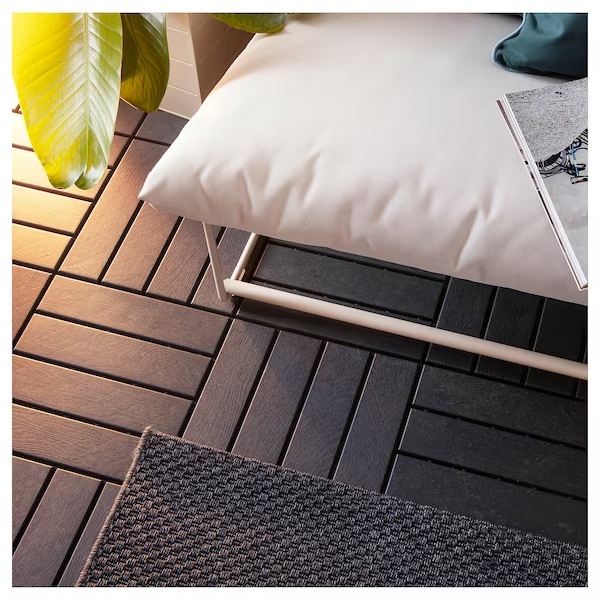
Slope miscalculations are another hidden failure point. A deck that is installed completely flat may seem fine at first, but without a slight gradient to encourage runoff, water collects in small pockets, accelerating fiber breakdown and surface damage. This issue is especially dangerous in freezing climates, where trapped moisture expands when it turns to ice, creating internal fractures that permanently weaken the wood.
Fastener placement also plays a crucial role in moisture control. Poorly installed screws or nails that pierce too deeply leave open pathways for water to enter the core of the wood, leading to internal swelling and premature splitting. Over time, moisture infiltration through fasteners doesn’t just weaken individual boards—it compromises the entire structure.
How strong will my deck be if I take moisture control seriously? With the right drainage strategy, proper slope adjustments, and high-quality fasteners, Acacia decking can resist moisture damage far better than most woods. But without these precautions, even the most water-resistant wood won’t survive years of trapped moisture and standing water. A deck’s greatest enemy isn’t the rain itself—it’s the failure to manage where that water goes.
If you’re wondering not just about strength, but also how long your deck will last, check out our guide on How Long Will My Deck Last? to understand the key factors that determine deck lifespan and how to maximize durability over time.

Conclusion
A deck isn’t just about wood—it’s about choosing the right material, the right installation, and the right supplier. How strong will my deck be? That depends on whether every factor, from wood selection to moisture control, has been accounted for. Even the toughest hardwoods can fail if installed poorly, left vulnerable to water damage, or built on a weak foundation. Strength isn’t just about density or resistance—it’s about how well a deck performs year after year, under real-world conditions.

At Woodspace, we specialize in Acacia decking that delivers long-term durability for large-scale projects. Unlike softwoods or lower-grade hardwoods, our Acacia deck tiles are built to handle heavy foot traffic, commercial use, and exposure to the elements without warping, cracking, or wearing down prematurely. How strong will my deck be if I choose Acacia from Woodspace? Strong enough to last.
Moisture-resistant, structurally stable, and naturally tough, Woodspace Acacia decking ensures that every project—from commercial rooftops to high-traffic outdoor spaces—is built on strength. Don’t let weak materials or poor installation ruin an investment. Choose wood that works as hard as your business does.
Browse our full range of Acacia decking solutions here and see how strength, durability, and expert craftsmanship come together at Woodspace.
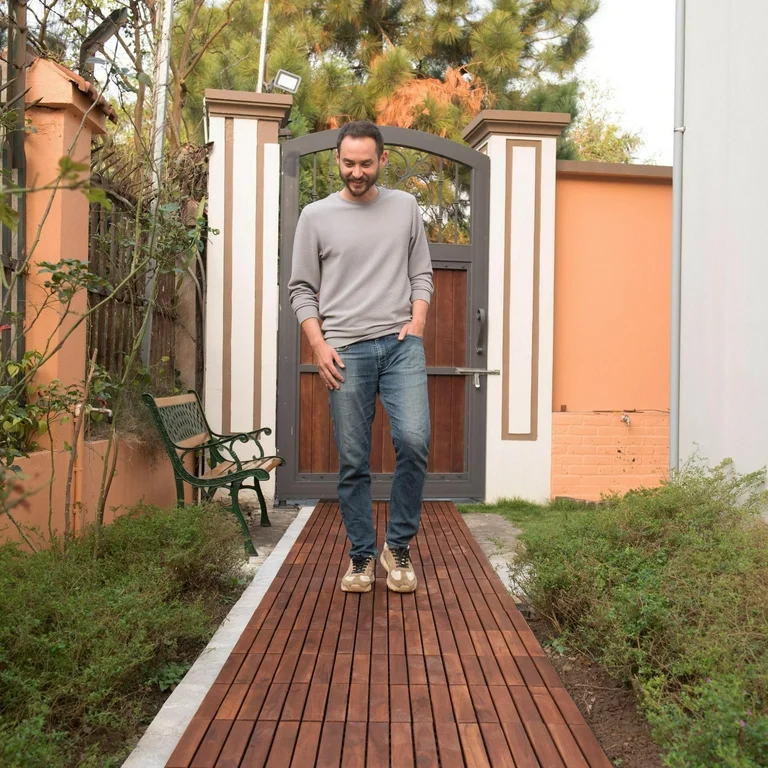
Woodspace® International - Your Trusted Supplier And Manufacturer of Outdoor Furniture.
-
We are the leading manufacturer and supplier of Acacia Wood Decking Tiles in Vietnam Wholesale export to the US, Europe, Japan FSC Certified.